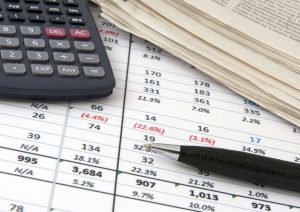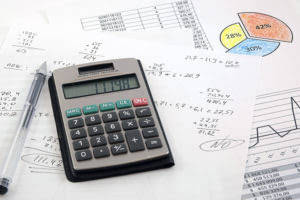
Depreciation expense account is an expense on the income statement in which its normal balance is on the debit side. On the other hand, the accumulated depreciation is an item on the balance sheet. It helps to ascertain the true value of an asset over time, influences purchasing decisions and plays an essential role in tax planning. Here’s a breakdown of how accumulated depreciation is calculated, the recording process and examples of practical applications. The purchased PP&E’s value declined by a total of $50 million across the five-year time frame, which represents the accumulated depreciation on the fixed asset. If a company decides to purchase a fixed asset (PP&E), the total cash expenditure is incurred in once instance in the current period.
- So, the accumulated depreciation for the equipment after 3 years would be $6,000.
- Accumulated depreciation refers to the total expense affixed to a fixed asset from the date it was put to use.
- So, in the second year, the depreciation expense would be calculated on this new (present) book value of $22,500.
- However, when your company sells or retires an asset, you’ll debit the accumulated depreciation account to remove the accumulated depreciation for that asset.
The sum of the year’s digits method
- The concept of depreciation describes the allocation of the purchase of a fixed asset, or capital expenditure, over its useful life.
- To illustrate, here’s how the asset section of a balance sheet might look for the fictional company, Poochie’s Mobile Pet Grooming.
- As an example, let’s assume that the original cost of an asset is $20,000, and it has an accumulated depreciation of $5,000.
- Thus, accumulated depreciation is an aggregation of individual depreciation expenses over time.
- Recording accumulated depreciation is a systematic process that ends up on the balance sheet.
Some companies don’t list accumulated depreciation separately on the balance sheet. Instead, the balance sheet might say “Property, plant, and equipment – net,” and show the book value of the company’s assets, net of accumulated depreciation. In this case, you may be able to find more details about the book value of the company’s assets and accumulated depreciation in the financial statement disclosures. In other words, the depreciated amount in the formula above is the beginning balance of the accumulated depreciation on the balance sheet of the company. Likewise, the accumulated depreciation in the formula represents the accumulated depreciation at the end of the accounting period which is the cutoff period that the company prepares the financial statements.

Accumulated Depreciation Journal Entry (Debit or Credit)

Accumulated depreciation is not a current asset, as current assets aren’t depreciated because they aren’t expected to last longer than one year. Accumulated depreciation is the total amount of depreciation expense that has been allocated to an asset since it was put in use. Get instant access to video lessons taught by experienced investment bankers.
- There are no guarantees that working with an adviser will yield positive returns.
- Likewise, the normal balance of the accumulated depreciation is on the credit side.
- Learn financial statement modeling, DCF, M&A, LBO, Comps and Excel shortcuts.
- In some financial statements, the balance sheet may just show one line for accumulated depreciation on all assets.
- By separately stating accumulated depreciation on the balance sheet, readers of the financial statement know what the asset originally cost and how much has been written off.
- Financial analysts will create a depreciation schedule when performing financial modeling to track the total depreciation over an asset’s life.
How to calculate the accumulated depreciation – the straight-line method
As an example, let’s assume that the original cost of an asset is $20,000, and it has an accumulated depreciation of $5,000. The formula for calculating the accumulated depreciation on a fixed asset (PP&E) is as follows. Yet, the capital expenditure (Capex) must be spread across the useful life of the fixed asset per the matching principle, i.e. the number of years in which the fixed asset is expected to provide benefits. Although land is a fixed asset, accumulated depreciation does not apply to it. This is because land is an asset that does not outgrow its usefulness over time.
Double-Declining Balance Method
This type of accounting offers a realistic understanding of the company’s assets value, which can influence financial decisions. Recording accumulated depreciation is a systematic process that ends up on the balance sheet. This is recorded as a contra-asset account, which is an account that offsets the value of a related asset account. On the balance sheet, the carrying value of the net PP&E equals the gross PP&E value minus accumulated how to calculate accumulated depreciation depreciation – the sum of all depreciation expenses since the purchase date – which is $50 million. In accrual accounting, the “Accumulated Depreciation” on a fixed asset refers to the sum of all depreciation expenses since the date of original purchase. Accumulated depreciation reduces the value of the corresponding asset on the balance sheet, therefore reflecting the total depreciation expense incurred since the asset’s acquisition.
Accumulated depreciation on balance sheet

When the fixed assets are sold or disposed of, the accumulated depreciation of the fixed assets that are sold or disposed of will need to be removed as well from the balance sheet together with the fixed assets themselves. Of course, this also applies when the company makes an exchange of fixed assets to replace the old fixed assets with the new ones. In other words, the accumulated depreciation will usually show up as negative figures below the fixed assets on the balance sheet like in the sample picture below.
However, the accumulated depreciation is not a liability but a contra account to the fixed assets on the balance sheet. Likewise, the accumulated depreciation journal entry will reduce the total assets on the balance sheet while increasing the total expenses on the income statement. As mentioned, the accumulated depreciation is not an expense nor a liability, but it is a contra https://www.bookstime.com/ account to the fixed assets on the balance sheet. Likewise, if the company’s balance sheet shows the gross amount of fixed assets which is the total cost, the accumulated depreciation will show as a reduction to the balance of fixed assets. On a balance sheet, the net value of the asset is calculated by subtracting the accumulated depreciation from its initial cost.

You would continue repeating this calculation for each subsequent year until the end of the asset’s useful life or the book value (Initial Cost – Accumulated Depreciation) becomes less than the depreciation expense. The amount directly reduces the net worth of the company’s assets and can therefore influence equipment decisions about whether to invest in asset maintenance, upgrade, or replacement. A contra asset is defined as an asset account that offsets the asset account to which it is paired, i.e. the reverse of the standard impact on the books. While the depreciation expense is the amount recognized each period, the accumulated depreciation is the sum of all depreciation to date since purchase. The concept of depreciation describes the allocation of the purchase of a fixed asset, or capital expenditure, over its useful life. The figure for accumulated depreciation can be located on a company’s balance sheet below the line for related capitalized assets.
